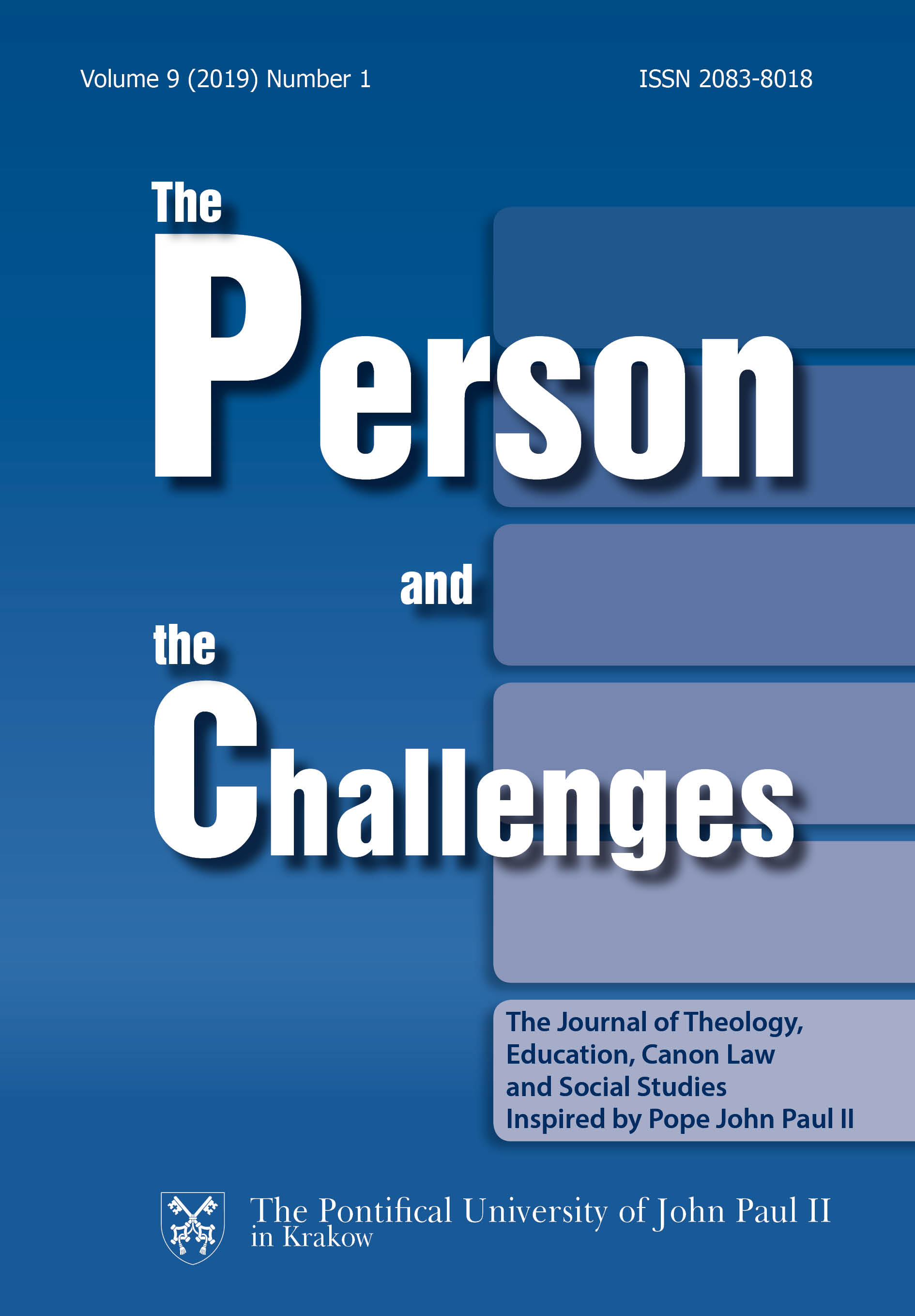John Paul II’s Theology of the Suffering Body
DOI:
https://doi.org/10.15633/pch.3363Słowa kluczowe:
John Paul II, suffering, Theology of the Body, communion, compassion, contingency, experience, participation, redemption, transcendenceAbstrakt
This article evaluates the experience of suffering and its redemptive value in the light of St. John Paul II’s Theology of the Body. It begins by exploring how man was created in “the beginning,” before the experience of evil and sin. Man’s “original experiences” of solitude, unity and nakedness help man to understand himself as a being who is always in relation and is called to transcendence. These experiences continue to resonate within man, though sin can blind him from interpreting them correctly. Instead of man’s body opening him to relations and receiving the love of God and neighbor as a gift, he often experiences shame for his disordered desires, which enclose man within himself. While shame can be a negative experience, it is also a “boundary experience,” in that it points man to an original goodness that is now lacking due to the experience of evil. Suffering, likewise, can be a boundary experience that opens man, through his vulnerability, to recognizing his need for communion with God and neighbor. Christ, therefore, does not eliminate suffering but redeems it, transforming it into a revelation of God’s love. Suffering has become a path to conversion, to rebuilding goodness in man’s heart, and to liberation from evil. Redemption occurs when man freely opens himself to Christ’s love in the midst of suffering, making up for what is “lacking” in Christ’s suffering: our participation. Suffering isn’t a problem to be solved so much as a mystery to enter into. Through participation in Christ’s suffering, not only is man able to experience his own redemption, he can also offer his body with Christ for the redemption of the world.
Bibliografia
Catechism of the Catholic Church, 2nd ed., Vatican translation, Rome 1997: Libreria Editrice Vaticana.
Cessario R., The Godly Image: Christ and Salvation in Catholic Thought from Anselm to Aquinas, New York 2002: Fordham University Press.
Fitzmeyer J., The Letter to the Romans, New Jerome Biblical Commentary, Raymond Brown et. al. eds., Englewood Cliffs, NJ 1990: Prentice Hall.
Granados J., The Suffering Body, Hope, and the Disclosure of the Future, “Communio” 36 (Winter 2009).
Granados, J., Toward a Theology of the Suffering Body, “Communio” 33, no. 4, (Winter 2006).
Granados Garcia J., La carne si fa amore: Il corpo, cardine della storia della salvezza, Siena 2010: Cantagalli.
Hauerwas S., Truthfulness and Tragedy: Further Investigations into Christian Ethics, Notre Dame IN 1977: University of Notre Dame Press.
John Paul II, Jesus, Son and Savior: A Catechesis on the Creed, Boston 1996: Pauline Books and Media.
John Paul II, Man and Woman He Created Them: A Theology of the Body, Trans. M. Waldstein, Boston 2006: Pauline Books and Media.
John Paul II, Apostolic Letter Salvifici doloris: On the Christian Meaning of Human
Suffering, Vatican Translation. Boston: Pauline Books and Media, (1.03.1984), AAS 76 (1984), 201-50.
Kampowski S., Contingenza creaturale e gratitudine, Siena 2012: Cantagalli.
Levinas E., Totality and Infinity: An Essay on Exteriority, Norwell, MA 1991: Kluwer Academic Publishers.
Vatican Council II, Gaudium et spes, in Vatican Council II, Volume 1: The Conciliar and Postconciliar Documents, Ed. Austin Flannery, O.P., new rev. ed., Northport, New York 1992: Costello Publishing.
Wojtyła K., Love and Responsibility, San Francisco 1981: Ignatius Press.
Wojtyła K., Sign of Contradiction, New York 1979: The Seabury Press.
Pobrania
Opublikowane
Numer
Dział
Licencja
Prawa autorskie (c) 2019 Zachary Swantek

Utwór dostępny jest na licencji Creative Commons Uznanie autorstwa 4.0 Międzynarodowe.
Autorzy publikujący w czasopiśmie udzielają jego wydawcy zgody o następującej treści:
- Autor zachowuje autorskie prawa majątkowe do utworu, a jednocześnie udziela wydawcy czasopisma zgody na jego pierwszą publikację w wersji drukowanej i wersji online na licencji Creative Commons Uznanie autorstwa 4.0 Międzynarodowe oraz zgody na wykonywanie opracowań, w tym przekładów.
- Autor ma możliwość udzielania zgody niewyłącznej na opublikowanie utworu w wersji, która ukazała się w czasopiśmie (np. zamieszczenia go w repozytorium instytucjonalnym lub opublikowania w książce), wraz z informacją o jego pierwszej publikacji w czasopiśmie.
- Autor może umieścić swój utwór online (np. w repozytorium instytucjonalnym lub na swojej stronie internetowej) jeszcze przed zgłoszeniem utworu do czasopisma.

